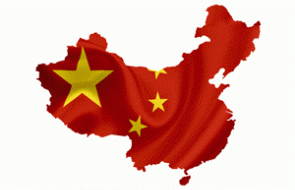
By Gareth Vaughan
ANZ Banking Group CEO Mike Smith says slowing economic growth in China is good news and is happening due to a rebalancing of the economy toward a less export driven, more services and consumption-based economy.
In a speech in Perth on Wednesday Smith took a swipe at a recent headline in The Australian newspaper that said 'China growth in slow lane at 7.7 per cent.'
"Even now the regular cycle of hard-landing concerns about China persist among commentators," said Smith.
"Yes, China’s current growth rate of around 7.5% does represent a slowdown from the 10% growth trend recorded from 1980 to 2010. And yes, there are concerns over excessive debt and related fears about the banking system; worries about a property bubble; and the presumed lack of meaningful progress on economic rebalancing."
"But let me assure you 7.5% growth in an economy the size of China’s is not in the slow lane."
Much at stake
Smith and ANZ have staked much on China. A former HSBC executive, Smith took the reins at ANZ in October 2007. He set out plans for Asia to be as big a profit source for ANZ as New Zealand within five years at the bank's 2007 annual general meeting two months later.
Since then ANZ has expanded in Asia including through buying the Asian retail, wealth and commercial operations of the Royal Bank of Scotland in a A$685 million deal, and investing about A$695 million in its locally incorporated Chinese subsidiary. ANZ has also sought to grow earnings in Asia by capturing banking business associated with trade and investment flows and by cross selling fee-based services to institutional banking clients.
For the year to September 30, 2013 ANZ's Asia, Pacific, Europe & America (APEA) unit delivered cash profit of A$1.015 billion versus New Zealand's A$1.183 billion. Annual operating income from the APEA unit was A$3.131 billion, 17% of total group operating income of just under A$18.4 billion. New Zealand delivered A$2.892 billion, or just under 16%. The balance of annual group operating income, A$12.355 billion, stemmed from Australia.
Here's a video interview featuring Smith talking to interest.co.nz about China in November 2012.
'More sustainable growth away from resource and pollution intensive activities'
Meanwhile in his Perth speech Smith said the rebalancing of the Chinese economy toward a less export driven, more services and consumption-based economy can’t be expected to occur overnight.
"It will take strategy, time, and determination …. and China has an ample supply of all three," he said.
"Just in case you haven’t been able to review the recent 21,500 word 'Decision' from China’s third plenum, covering 15 areas of reform …. the key shift is the focus on China’s much-talked about pro-consumption structural rebalancing."
"This includes new language setting out a 'decisive role' for the market in the Chinese economy - a change from the past, when the market was assigned a 'basic role'. It means we will begin to see the reform of state-owned enterprises, and financial reforms that will include greater exchange rate flexibility, and interest rate and capital account liberalisation," Smith added.
"To allow room for this structural transformation, China’s growth is moderating with annual growth of 7 to 8%, and perhaps closer to 7% in 2014. This is actually good news."
"Greater reliance on services will support consumer demand and also allow China to move to a more sustainable growth trajectory and away from resource and pollution intensive activities such as manufacturing and construction."
"Far from being in the slow lane, annual growth of 7% will underpin demand for Australia’s mineral and energy resources and create a major new opportunities in agriculture. It’s worth noting that iron ore prices actually rose in 2013, averaging $135 a tonne compared with $128 in 2012. This happened at the same time as services became a larger proportion of Chinese GDP than manufacturing for the first time," Smith said.
"The rebalancing is occurring while economic activity and commodity prices both remain healthy."
This article was first published in our email for paid subscribers. See here for more details and to subscribe.
2 Comments
What's good for the planet is good for us, hope it continues
It will even the raod out, but much leverage and investment relies on new growth opportunities to create areas of accelerated investment. Such areas allow good returns on projects, where the status quo is towards commidity-like behaviour and a slow rising grind of inflation until where once there was room in budgets for new buildings and production-generation, the slow growth results in tight margins and pressure of wages and rising costs. I hope people are ready and looking for the alternate spots before the train reaches the end of this line...

We welcome your comments below. If you are not already registered, please register to comment.
Remember we welcome robust, respectful and insightful debate. We don't welcome abusive or defamatory comments and will de-register those repeatedly making such comments. Our current comment policy is here.